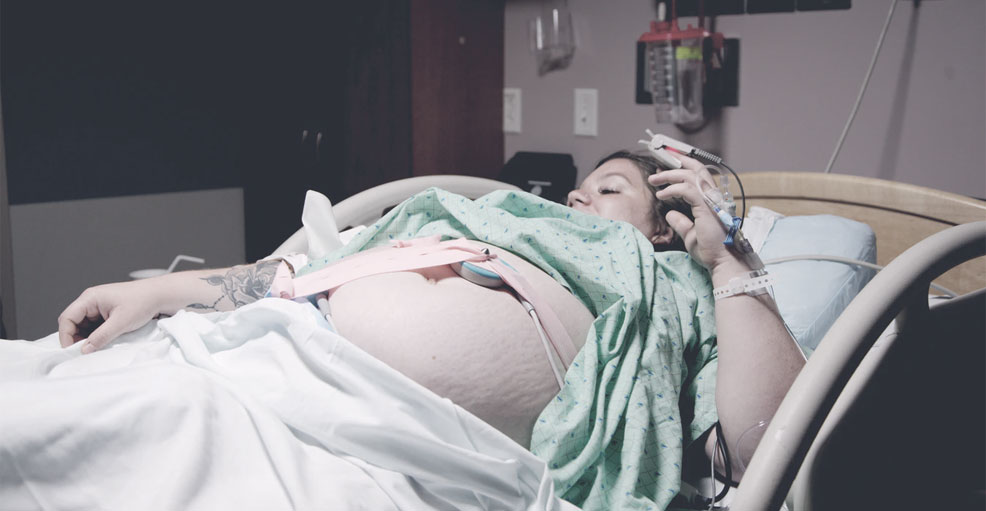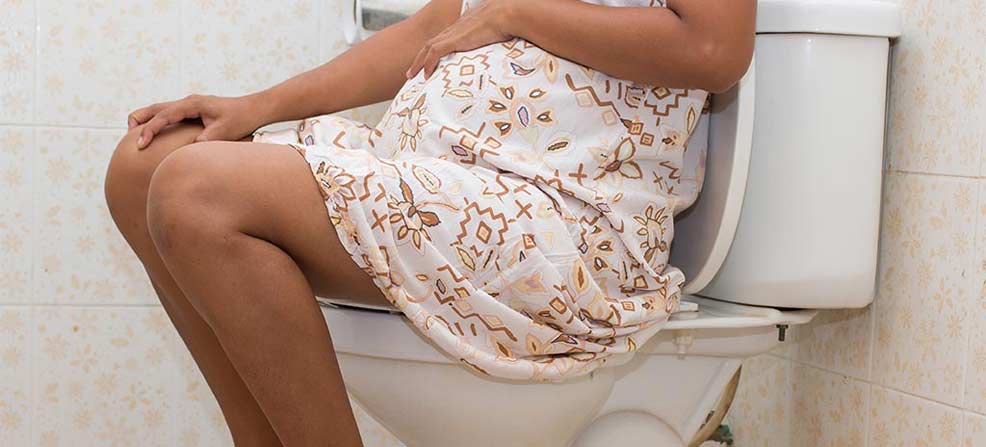Over a dozen early signs that your little one is ready to make an appearance!

Mommyhood101 independently tests and curates baby gear to help you make informed decisions. If you buy products through links on our site, we may earn a commission.
Once you've made it into the 37th week of pregnancy (well into the third trimester), you'll become increasingly vigilant and aware of subtle signs and symptoms of labor.
That little cramp, upset tummy, back pain, or any other new discomfort will have you wondering: is this labor!?
Many of these little signs will probably be false alarms, subtle signs that your body is changing and getting ready for birth, but not necessarily a sign of early or active labor.
What Happens During Labor?
Labor technically begins when you start to experience regular contractions, and ends when you give birth. Labor is divided into two main phases:
Early Labor
During regular contractions, your cervix will begin to widen and become soft and elastic. This cervical dilation (up to around 6cm) makes it possible for your baby to shift down into the birth canal. That phase is called Early Labor.
Early Labor eventually transitions into Active Labor. Sometimes the transition from early to active labor will take minutes, sometimes hours or even days.
Active Labor
During active labor, your cervix will continue to dilate up to around 10cm wide. Contractions will become more frequent and powerful. Discomfort and pain will increase, including cramps, nausea, and back pain.

At this point, your water may break and it's probably time to head to the hospital.
Here are 13 Early Signs of Labor:
- Braxton-Hicks Contractions
- Energy Levels Change
- Loose Joints
- Weight Gain Stops
- Cervix Dilates and Thins
- Baby Drops in Pelvis
- Urge to Urinate
- Cramps
- Stomach Discomfort and Diarrhea
- Back Pain
- Passing the Mucus Plug
- Contractions are Frequent & Strong
- Water Breaking
Braxton-Hicks Contractions
These are often referred to as "false labor" because they are not a reliable sign of impending labor, but it is important to include here because it contrasts nicely with true contractions.
Many women experience infrequent and light- to moderate-intensity contractions during their second or third trimester.
These Braxton Hicks contractions are typically not painful, occur on an irregular frequency, are not close together or become closer together (or stronger or longer) over time, they may subside when you change positions, and tend to come and go randomly throughout the weeks and months leading up to true labor.
As you'll learn later in this article, real contractions are very different from these.
Energy Levels Change
This is very inconsistent and can go in either direction: in your final trimester you might feel a sudden change in your energy levels, either up or down.
Some women get a burst of excitement and energy that is accompanied by planning, cleaning, and other "nesting" types of behavior. We suggest going out and getting some fresh air, taking a stroll through the park, and finding low-exertion ways of getting out some energy.
This woman is clearly feeling some positive energy!

Other women find themselves truly exhausted in the weeks leading up to true labor, only wanting to curl up on the couch and watch their favorite shows.
Either way, a change of energy levels is a pretty good sign that your body is experiencing a dramatic change in hormones that are a pretty good sign that you have a few weeks remaining until true labor starts.
Loose Joints
Speaking of hormonal changes leading up to early labor, many women experience feeling loose joints.
During the weeks leading up to labor you might feel a little clumsy, a little unstable on your feet, and a little less coordinated than usual.
This might be due to the release of relaxin, a hormone that helps loosen up your ligaments and get you ready for labor. This hormone is released mostly during the first trimester but continues a slow release over the second and third trimesters, providing a cumulative effect on relaxing your joints and loosening you up for delivery.
Weight Gain Stops or Slows
One sign that you're nearing the end of your pregnancy is that you stop gaining weight, weight gain slows, or you might even start losing a bit of weight in the final weeks of pregnancy.
The hormones responsible for weight gain during pregnancy, and a slow loss of weight towards the end of pregnancy, are not fully understood.
We do know that the production of a hormone called oestrogen declines sharply during the final weeks of pregnancy, slowing breast growth.
Plus, you might not be experiencing the same cravings and hunger that you did during the first and second trimesters, which will slowly reduce your calorie consumption.
Cervix Dilates
During a pelvic exam, your doctor or nurse will be able to tell you whether your cervix is beginning to dilate, which usually is a pretty good sign that labor is approaching.
Some women are comfortable checking dilation themselves as well (with their fingers), though we definitely recommend having it done by a health care professional.
As your cervix effaces or becomes thinner, it becomes increasingly dilated. This allows the baby to begin dropping lower into your pelvis, as seen below. Once you're about 4-6cm dilated, you're considered to be in active labor.

This process of cervical dilation also increases the odds that your water will break. Notice the thin blue line? That's the sac of amniotic fluid. As more pressure is placed on that line and there is less and less cervix to insulate it, that sac becomes increasingly likely to rupture (i.e., your water becomes more likely to break).
Baby Drops Deep in Pelvis
As your cervix dilates, your baby will drop lower and lower into your pelvis. This is called lightening. Many moms report feeling their "baby drop" as a dramatic change of pressure and position of the baby.
You might suddenly realize there's a bit more space between your breasts and the peak of your baby bump, and it might be noticeable in the mirror. You also might notice that pressure is taken off your diaphram, making it a bit easier to breathe.
For first-time moms, lightening can happen even weeks before active labor, but for second-time moms it could mean jut a few hours before active labor. Every mom is different, and every body reacts differently to this process; some might not notice anything different at all.
Urge to Urinate
Once your baby drops, you might feel a relief of any shortness of breath you may have experienced due to pressure on your diaphram.
Unfortunately, that is likely to be replaced by more pressure on your bladder, causing a need to urinate more frequently.
You might need to pee a couple times an hour during this phase. Be sure you're drinking plenty of fluids to avoid dehydration.
Cramps
Your entire body will start adapting to your baby's constantly changing position, including your gastrointestinal system.
This might cause an increase in tummy cramps, similar to the cramps you get during a normal period.
You might also feel some stomach discomfort, which might be an urge to make a bowel movement or maybe even diarrhea.
Stomach Discomfort and Diarrhea
As your body gets closer to active labor, it will begin to release a hormone called prostaglandins.
This can cause stomach discomfort and you might end up having more bowel movements than usual, and maybe even diarrhea.
Some believe that this process of emptying your bowels provides the opportunity for your uterus to have more effective contractions.

Back Pain
As your body continues to adapt to the changing position of your baby, new internal pressures will cause new soreness and pain.
Many moms experience some back pain, especially in the lower back, as they get closer to active labor. Now you know why those classic images in your mind of pregnant women from movies and photos show them with one hand on their lower back!
Passing the Mucus Plug
If you look at the diagram of the uterus and cervix above, you'll notice that the previously-closed cervix slowly begins to open. As it opens, the mucus plug that previously made a seal in the closed cervix becomes more likely to fall out.
Many women notice this falling out, usually while on the toilet, and it's an off-white sticky substance that looks like, well, mucus!
The mucus plug falling out is a pretty sure sign that you're starting to dilate and moving into early labor.
Contractions are Frequent and Strong
We began this article by discussing Braxton Hicks contractions, or false labor. Recall that we said these are usually infrequent, mild to moderate in strength, not in a regular pattern, and don't become stronger with time.
This gives a pretty good clue about what real contractions will feel like.
Unlike Braxton Hicks contractions:
Real contractions can get stronger with physical activity.
Real contractions don't go away when you change position.
Real contractions become stronger with time.
Real contractions tend to occur in a somewhat regular pattern (like one every 3-5 minutes as an example).
Real contractions get stronger and more frequent with time, and you will notice that after an hour they are much stronger and more frequent than they were an hour ago.
Real contractions tend to be felt through a broader portion of the body, and are not isolated to just the tummy area.
Your doctor will tell you what to look for in terms of the frequency of contractions. In early labor, you might have a contraction every 5-10 minutes, and then they will begin to get more frequent with time.
If you don't remember what your doctor said, or if you're having difficulty timing your contractions, definitely reach out to your doctor.
Your Water Breaks
As your cervix dilates and your baby's head begins to push lower down into your pelvis, eventually your water might break (the amniotic sac ruptures).
Even though this seems like a very common occurrence, it actually doesn't happen to most women, or they don't even notice it happen.
But for some women it can happen literally a few minutes before birth, as a final sign that your baby is ready to come out.
If your water does break, immediately call your doctor and have some information ready for them: color of the discharge, any smells, the approximate amount of the discharge, and exactly when it happened.
Your medical provider will use these details to gauge how imminent your labor is.
Should I Call the Doctor?
In general, yes! If you're experiencing anything that's unexpected or uncomfortable, always call your doctor. Many offices will have an experienced nurse take your phone call and give you a judgment regarding what to do next.
Many doctors will tell you to call them when your contractions are spaced about 2-3 minutes apart, unless you live very far (over 30-60 minutes) from the hospital. Some might tell you to call when your water breaks, or when you feel an urge to push. Every doctor's office is a bit different and will have different guidance for you; they know you best, so definitely do not be shy to give them a call.
Immediately call your doctor if you have any bleeding, your water breaks, if you have any colored discharge (for example pink, green, brown), or if you're feeling lightheaded or dizzy, have a headache, or double vision.
References
WebMD, Pregnancy and Signs of Labor










